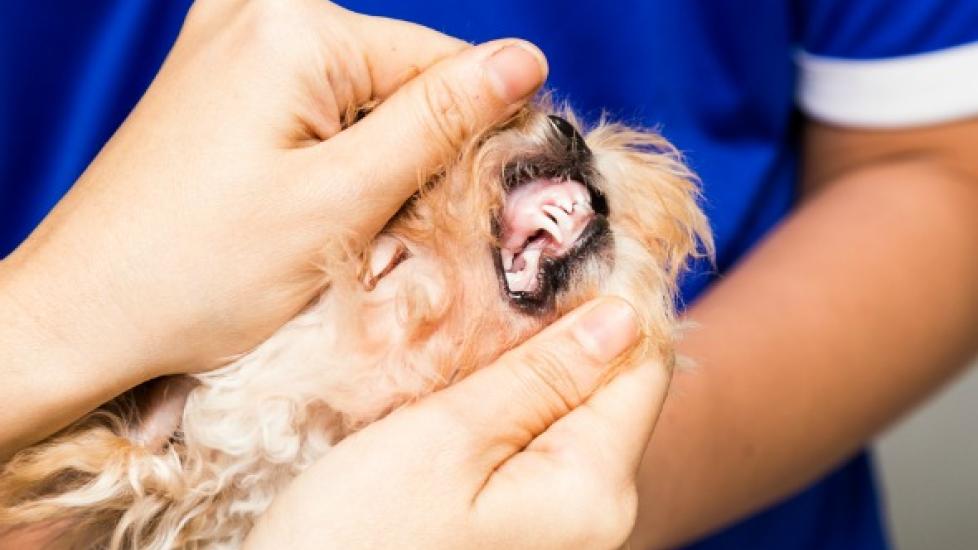Cyst on the Gums in Dogs
Dentigerous Cyst in Dogs
A dentigerous cyst is, literally, a cyst on the tooth. It is characterized by a fluid filled sac, similar in form to a blister, which has originated from the tissue surrounding the crown of an unerupted tooth. It occurs in any breed that is at an increased risk for impaired eruption, such as boxers and bulldogs. It tends to occur in the mandibular (lower jaw) first premolars, and often on both sides (bilateral). This condition is diagnosed if the teeth are unerupted at six months old, but a cyst may not form until later, if ever.
Symptoms and Types
The symptoms can include one or more of the following:
- "Missing" tooth
- Formation of a soft swelling at the site of a missing tooth, often fluctuant with fluid
- The patient may show evidence of a pathological (abnormal) fracture of the lower jaw due to cystic damage to the surrounding bone, with no previous indication of a problem
- Cystic changes may be initially unapparent
Causes
Unerupted teeth.
Diagnosis
Your veterinarian will search for an oral mass - a benign tumor that forms at the root of a tooth. Tooth structures (complex or compound) are sometimes contained within a cystic structure, that is, the tooth is covered in gum tissue that resembles a sac, but with different levels of organization. Radiographic imaging is essential in any instance of missing or unerupted teeth, and is often used to get a definitive diagnosis. Radiographic results may show evidence of a radiolucent (invisible to x-ray) cyst originating from the remaining enamel organ at the neck of the tooth, and enveloping the crown (a halo).
Treatment
If an embedded tooth is present in a mature animal, an assessment will be made of any cystic structure or other abnormal changes involving the tooth; continued monitoring would be reasonable if a surgical extraction would damage large amounts of bone. If a cystic formation is present, your veterinarian will recommend a surgical extraction, with complete surgical removal (debridement) of the cystic lining. If the jawbone has been damaged, your doctor will consider a synthetic bone replacement. Appropriate pre-operative antimicrobial and pain management therapy will be given when indicated, with patient monitoring and support during anesthetic procedures. If there are abnormalities in the growth of a tooth, and it is a non-essential tooth, it would be best to extract it, even if cystic changes are not present.
Living and Management
Pathological fracture of the jawbone may occur if a dentigerous cyst is not diagnosed and treated. If this condition is detected early and treated appropriately, the prognosis is good.
